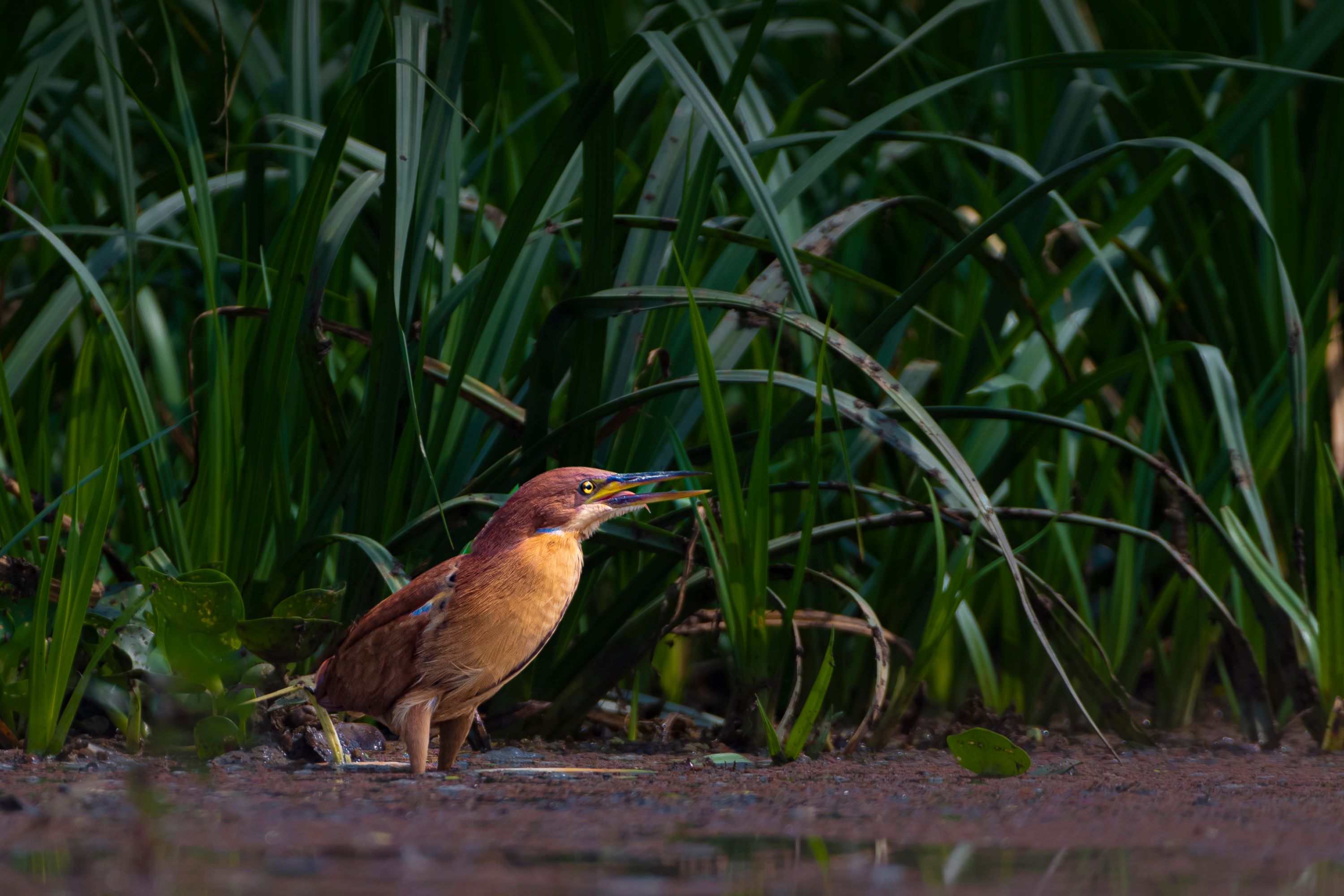
Cinnamon Bittern: The Shy Denizen of Asian Wetlands
Introduction to the Cinnamon Bittern
The Cinnamon Bittern, scientifically known as Ixobrychus cinnamomeus, is a small heron known for its striking cinnamon-colored plumage. This bird, a member of the family Ardeidae, is found primarily in the wetland habitats of Asia, where it leads a reclusive life amid dense vegetation.
Physical Description
The Cinnamon Bittern is a small wading bird, typically measuring about 38 cm in length. The male is notable for its bright cinnamon-rufous plumage, while the female and juvenile are more subdued with streaked brown and buff plumage. They possess a short neck and a stout bill, characteristic of the Ixobrychus genus.
Habitat and Distribution
This bittern inhabits a range of wetland environments across South and Southeast Asia, including marshes, swamps, rice paddies, and reed beds. Its distribution spans from India and Sri Lanka to China, Indonesia, and the Philippines, highlighting the bird's adaptability to varied wetland ecosystems.
Behavior and Lifestyle
The Cinnamon Bittern is a secretive and elusive bird, known for its skulking behavior. It is most active at dawn and dusk (crepuscular) and spends the day hidden among reeds and marsh vegetation. This elusive nature, combined with its camouflaged plumage, makes the Cinnamon Bittern a challenging bird to spot.
Feeding Habits
Its diet primarily consists of small fish, amphibians, insects, and crustaceans. The Cinnamon Bittern hunts by standing still or slowly stalking its prey in shallow water, striking quickly with its sharp bill.
Breeding and Nesting Habits
Breeding takes place during the monsoon season. The Cinnamon Bittern nests solitarily or in small, loose colonies. Nests are typically built close to the ground in dense marsh vegetation and are made from reeds and grasses.
Egg Laying and Incubation
The female lays a clutch of about 3 to 6 eggs, which are pale blue or green in color. Incubation is carried out mainly by the female for about 18 to 20 days. The male may guard the nesting territory but does not typically participate in incubation.
Chick Rearing and Parental Care
The chicks are born altricial and are dependent on the mother for food. They are fed regurgitated food and grow rapidly, beginning to venture out of the nest after a few weeks but remain nearby for additional parental care.
Vocalizations and Communication
The Cinnamon Bittern is relatively quiet but emits a series of low-pitched calls, especially during the breeding season. These calls are likely used for communication between mates and signaling territory.
Conservation Status
The Cinnamon Bittern is classified as Least Concern by the IUCN, but it faces threats from habitat loss and degradation, especially in the draining of wetlands and changes in agricultural practices. Conservation efforts focus on protecting and managing its wetland habitats.
Similar Species and Taxonomy
Belonging to the order Pelecaniformes and the family Ardeidae, the Cinnamon Bittern is part of the Ixobrychus genus, which includes several other small bittern species. It shares habitat preferences and behaviors with its Ixobrychus relatives but can be distinguished by its unique cinnamon-colored plumage.
The Cinnamon Bittern in Utah
The Cinnamon Bittern is not found in Utah or North America, as its distribution is confined to Asia. In Utah, bird enthusiasts can observe other members of the Ardeidae family, such as the American Bittern, in suitable wetland habitats.
Conclusion
The Cinnamon Bittern, Ixobrychus cinnamomeus, is a distinctive and intriguing bird, embodying the diversity and adaptability of the wetland avifauna of Asia. Its secretive behavior and specialized habitat preferences make it a species of interest to birdwatchers and conservationists. Protecting the wetland habitats of the Cinnamon Bittern is essential for the survival of this species, emphasizing the global importance of wetland conservation efforts.